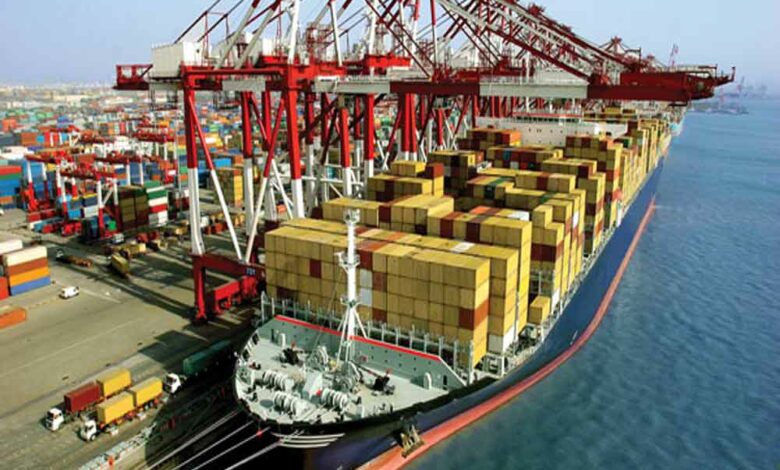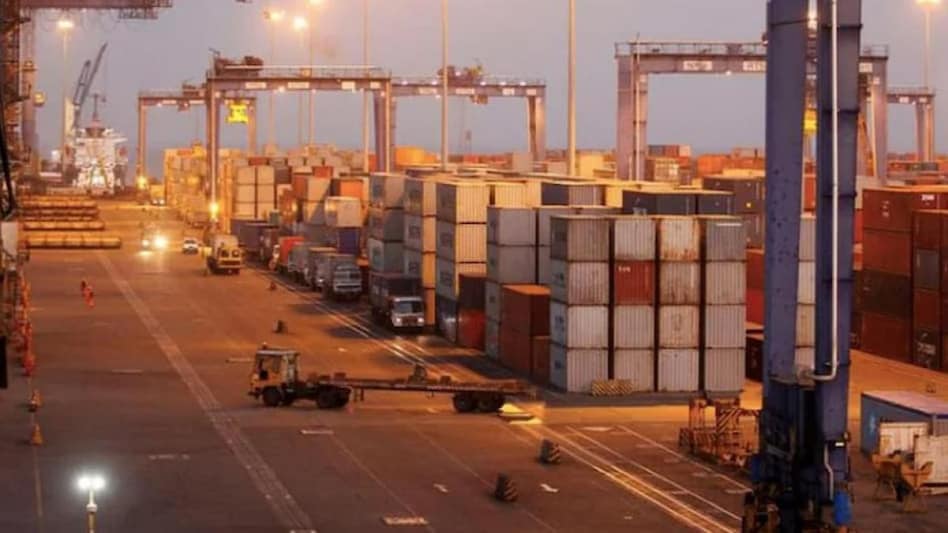All-time High in the trade deficit of 24.6 billion dollars

India’s trade deficit widened to a record high of 24.6 billion dollars in June.
This comes despite a 16 percent growth in exports, and that’s because imports have soared by more than 16 billion dollars. This hike in the trade deficit has perhaps added pressure on the currency as well.

We can understand the meaning of trade deficit by its name, i.e., deficiency in trade. When any country performs trade, it includes both imports and export. A trade deficit is a situation when imports increase and exports decrease. This situation where imports exceed exports is a dangerous situation for a country.
The term imports increase reflects that the amount of domestic currency that went outside the country increased. In contrast, a decrease in exports implies that the flow of foreign currency in the domestic countries has decreased, which has led to a deficit in the government’s revenue.
In June, the trade deficit hiked to an extreme level. In 2021-2022, the total trade recorded was 400 billion dollars, among which exports and imports were also included. In comparison with 2019-2020, this year, there is an all-time hike in total trade, but this portion of imports is more significant than exports. In the financial year 2019 – 2020, the total trade was 313 billion dollars, while 422 billion total trade was recorded in 2021 – 2022.
When we compare the trade amount, this year’s total trade is greater than the previous year, but if we analyse the data from another point of view, we will notice that imports exceed exports. The exports rose by 51 percent in June. In other words, although the revenue generated is high, the exceeded imports caused revenue to be spent through high imports.
Why do imports exceed export?
This year too many things have come together both from the import front and the export fronts. There are a couple of narratives, including petroleum products, Gems, jewellery, and electronics. A significant rise in the price of these communities is seen.
In the case of exports, exports picked up compared to last year. We had about 10% growth in export in FY18 as compared with the 5% of FY 17. So we see a pick up in exports, but the problem is simply that our imports didn’t pick up as much as imports, leading to the trade deficit.
Following are the reasons behind the trade deficit :
- Russia Ukraine War
As we all know that in the month of February, Russia attacked Ukraine. This has led to an immense War between the two countries. Russia and Ukraine are both countries that produce various goods like coal and wheat on a large scale. Both the countries also even export goods all over the world in high quantities.
Due to the war between Russia and Ukraine, the production of goods that they use to export decreased. This decrease had led to low exports of goods. Subsequently, these low exports increased the price of those goods in the international market because low supply has created a shortage in the global market. And when there is a shortage, the cost of that commodity increases and makes them expensive.
When the price of the commodities increase in the international market, India has to import those goods at a high price. Subsequently, the imports became expensive and led to a trade deficit.
- Low Export Prices
India used to export on a large scale. It exports commodities including pharmaceuticals, cotton, cereals, jams, and jewellery on a large scale. But in recent times, it has been seen that the demand for the commodities which India exports have reduced. This has subsequently decreased the exports.
Conclusion
According to the senior economist of Kotak Mahindra Bank, Most adverse conditions exist at this point. Oil prices remain significantly elevated, and most commodity prices are also earlier elevated. From April-May onwards, we have seen some kind of a peek out of their moderation. Coal prices and coal imports have been on the rise. Somehow we knew that it would happen.
At the same time, we must remember that non-oil imports have also increased significantly. This shows the divergence that exists between global versus domestic demand. Wherein demand domestically is playing catch-up post-pandemic, the non-oil imports are relatively much firmer, while globally, the recessionary environment is slightly setting in. Now we are seeing fatigue exports. This will remain a big point of worry to watch out for.

According to DK Joshi, the trade deficit will be much higher than last year, and consequently, the current account deficit will increase. We expect that the current account deficit will be around 3% of GDP, more than two times what it was last year.
The reasons are apparent, Indian exports depend heavily on global demand and are extremely sensitive to the international market. Every time global demand slums that is the trajectory for exports.
On the other hand, imports are pretty inelastic. Even if global prices go up and domestic demand remains strong, the import demand will remain strong, which is precisely what is playing right now. Hence the wedge between exports and imports is rising, creating a high trade deficit and current account deficit environment.
Edited by Prakriti Arora




